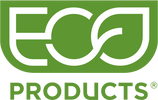LEARN
Support Composting
We need to increase the number of composters that accept food waste and compostable packaging.
In order to increase these numbers, there are a number of challenges that need to be addressed. We spend a lot of time working with a wide array of partners on these issues, and while we are making progress, there is still a lot of work to do.
In many ways, composting of post-consumer food scraps and packaging in the United States is where recycling was 50 years ago. The number of facilities processing food waste has steadily grown since the late seventies to around 200 today. Of those, around 70% are accepting some form of compostable packaging.
Road Map & Action Plan
In 2021, BPI and BioCycle Magazine hosted a workshop with Composters & Haulers, Municipalities, Foodservice Operators & Brands, Compostable Product & Material Manufacturers, and Associations & Subject Matter Experts.
The report from those sessions and its corresponding roadmap and action plan are an excellent starting point for anyone digging in to these topics.
COMPOSTING CHALLENGES
Click each Challenge to Learn More
1. Contamination from
Non-Compostable Materials
3. National Organic Program (NOP) Rules
2. Compostability Standards
4. End-Market Demand for Finished Compost
1. Contamination from Non-Compostable Materials
Contamination from non-compostable materials is the biggest challenge facing composters accepting food scraps and packaging.
Unlike single-stream recycling systems that are designed to separate items into different material categories, non-compostable contaminants must be removed from organics streams by hand – either through a sorting process where the material is generated, or by the composter once it has been accepted for processing.
There are a number of ways to address the contamination issue, all of which need significant work and attention from the compostable products industry and others.
- Better on-product labeling is needed to make it easier for consumers, end-users, composters and others to distinguish between compostable and non-compostable products.
- Consumer education on what composting is and why it is so critical to keep non-compostables out of compost bins would help as well.
Our solution to contamination mitigation in the foodservice industry is the CIRC Program – a scorecard-driven, systems approach. It's designed to help generators (restaurants, stadiums, etc.) create cleaner streams of materials that composters will be genuinely excited to accept.
WATCH: How Contamination Ruins Compost (1:41 mins)
You can Support Composting by:
- Reading Product Labels and Bin Signage
- Sorting compostable materials properly
- Using our CIRC Program to setup successful waste diversion systems
2. Compostability Standards
An increasing number of composters are requiring that products be field tested before they will accept them into their facilities.
We are supportive of this idea conceptually, and have done more work on field testing than any other manufacturer in the industry.
That said, the lab vs field debate has had some unintended consequences for the broader organics diversion system, and there are a few misconceptions to address.
1. Field Testing Will Not Solve Contamination from Non-Compostable Products
The biggest problem we have in the system right now is contamination from materials like traditional plastic and glass that will never break down in any composting environment. No field testing program, no matter how comprehensive, will keep these materials out of organics streams.
2. Field Testing Results are Highly Variable and There is No Third-Party Standard
As the industry’s leading field tester of compostable products, we have seen this first hand.
The inherent variability of location-specific field testing is part of why developing a third-party standard is proving to be so difficult.
3. Best Management Practices (BMPs) for Processing of Compostable Products Do Not Exist
In addition to a third-party standard for the actual testing procedures, a minimally viable set of processing conditions must be established and agreed upon by the composting industry in order for field testing data to be reliable and indicative of actual performance.
WATCH: Creating Zero Waste Success in Colorado - Field Testing Compostable Packaging (2:08 mins)
You can Support Composting by:
- Keeping non-compostable materials like glass and conventional plastic out of composting systems
3. National Organic Program (NOP) Rules
The current definitions of “compost” and “compost feedstock” in use at the USDA’s National Organic Program (NOP) were established decades ago when compostable products were relatively unknown.
Those definitions prevent bioplastics like PLA from being an allowable input in compost that is certified as organic under NOP’s program.
This means that composters can only accept bioplastics if they are not selling their finished product as organic, or if they have a means of keeping piles that do contain bioplastics separate from the piles headed for organic certification.
Finished compost that is certified as organic can be sold at significant price premiums, adding to the operational challenges created by these antiquated definitions.
BPI has submitted a formal petition to the NOP with a request to broaden the definitions of “compost” and “compost feedstock” to include compostable products as an allowable input in compost that is certified as organic.
If these definitions are changed, the amount of food waste diverted from landfills will increase as the operational and end-market challenges associated with this issue are relieved.
Support BPI’s petition, or submit comments directly to the NOP at NOP.Guidance@usda.gov
You can Support Composting by:
- Sign BPI's petition to request broadening the definitions of "compost" and "compost feedstock"
4. End-Market Demand for Finished Compost
A viable organics diversion system depends on end-market demand for the material that has been recovered and “manufactured” into a valuable soil amendment
Without a steady stream of demand that economically incents composters to continue processing new material, it is impossible to expect the system to work long term.
If you or your organization can help drive this demand by buying finished compost – either for residential landscaping or something much bigger – please consider doing so.
You can Support Composting by:
- Purchasing finished compost
- Encouraging your neighborhood, community, or workplace to use finished compost for larger projects
